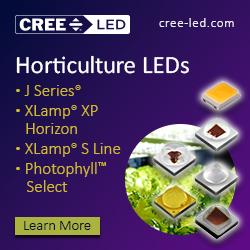Smart Irrigation Industry worth $3.0 billion by 2029
Discover how the Smart Irrigation Industry is projected to reach $3.0 billion by 2029, driven by advancements in technology, water conservation needs, and sustainable agriculture practices.
The Smart Irrigation Market is expected to reach USD 3.0 billion by 2029 from USD 1.8 billion in 2024, at a CAGR of 11.2% during the 2024-2029 period. The growing deployment of sensor nodes that are strategically placed throughout agricultural fields to gather real-time data, enhances the performance efficiency of sensors, which thereby drives the market growth of smart irrigation systems. Additionally, the rising implementation of government initiatives towards water conservation, increases the adoption of smart irrigation systems.
The sensor component is expected to have the highest CAGR in the smart irrigation industry during the forecast period.
The sensor component of the smart irrigation market is anticipated to grow at the highest CAGR during the forecast period. This growth is driven by factors such as changing climatic conditions, stricter environmental regulations, and the need to enhance crop productivity. Advances in wireless technologies are also contributing to market expansion, including the integration of Wi-Fi and cloud-based systems with soil moisture sensors for real-time field data, and the use of GPS for tracking irrigation machinery. The increasing adoption of soil moisture sensors, rain sensors, and fertigation sensors for irrigation scheduling on farms is expected to further propel market growth during this period.
Non-agricultural applications is expected to have the second-largest market size in the smart irrigation Industry during the forecast period.
The smart irrigation industry for non-agricultural applications is expected to have the second-largest market size during the forecast period. Key factors driving this market growth include the increasing number of government initiatives to promote water conservation, the decreasing cost of smart irrigation controllers, and the growing popularity of automated irrigation solutions among residential and commercial land contractors.
Asia Pacific is anticipated to register the highest CAGR in the smart irrigation Industry during the forecast period.
The adoption rate of smart irrigation techniques is expected to grow at the highest CAGR in the Asia Pacific region during the forecast period. Key factors driving this growth are the increasing use of variable rate technology, smart irrigation systems, and AI-based farm analytics services. Additionally, the growing need to manage and monitor water requirements due to inadequate rainfall and water scarcity in the Asia Pacific region is further accelerating the expansion of the market.
The report profiles key players such as The Toro Company. (US), Rain Bird Corporation. (US), Netafim (Israel), HUNTER INDUSTRIES INC. (US), HydroPoint (US), Manna Irrigation Ltd. (Israel), Stevens Water Monitoring Systems Inc. (US), Galcon (Israel), Rachio inc. (US), Weathermatic (US), Irrigreen (US), Banyan Water, Inc. (US), Delta-T Devices Ltd. (UK), CALSENSE (US), AquaSpy (US), Soil Scout oy. (Finland), Acclima, Inc. (US), RainMachine - Green Electronics LLC (US), WiseConn Engineering (US), VALMOUNT INDUSTRIES, INC. (US), GroGuru (US), Orbit (US), HORTAU (US), Mottech. (US), and Cyber-Rain (US).
Featured Product

